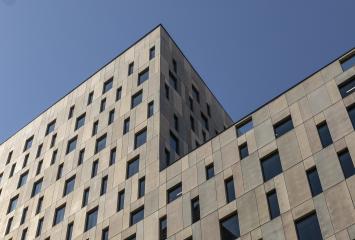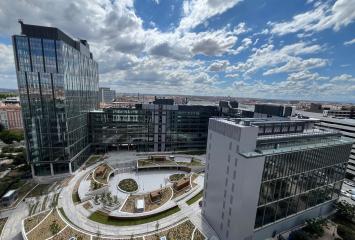The principles of ergonomics in workspaces
Although well-being in the workplace is something we take for granted in today's offices, it is actually a recent trend, so there are certain disciplines that still have a lot to offer or that are still being implemented in workplaces.
One of them, and the one that can help the most in the day-to-day of users, is ergonomics. This concept affects not only the comfort of an employee (for example, with a comfortable chair), but it is a discipline that must consider the entire environment in which people move to measure the relationship they have with objects and spaces to see if they meet the optimal physical conditions.
What does ergonomics pursue?
It is a science that encompasses various working conditions that can influence worker comfort, and that includes elements, such as lighting, vibration, temperature, noise, workplace design, tool design, work shifts, and even work breaks.
Therefore, the main objective of ergonomics is to ensure a better interaction between the employee, the place where he performs his tasks and the tools he uses to do so.
Differences between a space that does or does not take ergonomics into account
By improving working conditions, the physical problems of work are reduced and, therefore, there are fewer injuries or ailments that can cause certain movements and postures. Ergonomics can even be the cause of an increase in productivity, since it promotes a safe work model and creates a good working environment, making each of the workers more productive and efficient in their tasks.
This improvement in production is also related to other factors such as the reduction of absenteeism, the increase in motivation and concentration and consequently the reduction of errors.
Thanks to this discipline we can even go further, introducing new technologies in companies with the aim of improving work performance, for example, automating work tasks that allow us to optimize time much better.
How to apply the principles of ergonomics
At Colonial we apply the principles of ergonomics in all our buildings, designing spaces that can create a work environment as healthy as possible.
Good ventilation, location of workspaces close to areas with more natural light (to mitigate visual fatigue), pleasant temperature and maintained humidity, as well as low noise levels and spacious and diaphanous spaces, are undoubtedly some of the characteristics that most positively affect users’ well-being and that we most seek to include in our offices.
In itself, adapting it to concrete examples of real estate, we can see that what ergonomics seeks is to create more human spaces in the workplace, since the factors that are most repeated is the fact of taking advantage of natural light, of inviting to create relationship between users, and of avoiding any type of practice that can hinder the poor health of employees (with uncomfortable chairs that cause a bad posture or a poorly ventilated space, for example).
In short, a good application of ergonomics at the time of conceptualizing a space seems essential to us to ensure that we can comply with the Human Centric concept, which seeks to propose a construction that always puts people at the center, because they are the ones who will have to inhabit the building daily.

